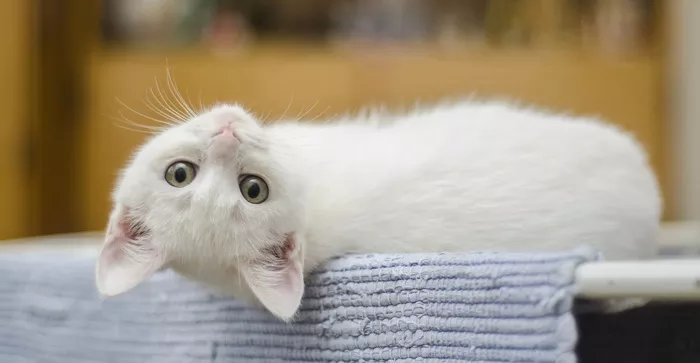Cats are often regarded as enigmatic companions, displaying behaviors that can perplex even the most seasoned pet owners. One question that frequently arises is whether cats can recognize their human owners by their faces. This article delves into the complexities of feline recognition, exploring the sensory modalities cats utilize, their social behaviors, and the implications of their recognition abilities.
The Sensory World of Cats
To understand how cats recognize their owners, it is essential to appreciate the sensory world in which they operate. Unlike humans, who primarily rely on visual cues for recognition, cats possess a unique sensory profile that emphasizes smell and sound.
Vision in Cats
Cats have a different visual perception compared to humans. Their eyes are adapted for low-light conditions, allowing them to see well in the dark. However, their color vision is limited; they see a range of blues and greens but have difficulty distinguishing reds and pinks. This means that while they can detect movement and see in dim light, their ability to recognize fine details, such as human facial features, is compromised.
When a cat looks at a human face, it may not see the distinct features that humans rely on for recognition. Instead, they perceive a somewhat blurred and indistinct image. This limitation suggests that cats are less likely to identify their owners solely based on visual cues.
The Importance of Smell
Cats have an extraordinary sense of smell, which is far superior to that of humans. Their olfactory receptors allow them to detect a wide range of scents, and they use this ability to gather information about their environment and the individuals within it.
When a cat interacts with its owner, it is likely relying on scent to recognize them. Each human has a unique scent profile, which cats can memorize and associate with their owners. This olfactory recognition is crucial for cats, as it helps them navigate social interactions and establish bonds with their humans.
Auditory Recognition
In addition to their keen sense of smell, cats are also highly attuned to sound. They can distinguish between different vocalizations and tones, which plays a significant role in their recognition of humans. Studies have shown that cats can recognize their owner’s voice and respond differently to it compared to unfamiliar voices.
When a cat hears its owner’s voice, it may associate the sound with positive experiences, such as feeding or playtime. This auditory recognition reinforces the bond between cat and owner, even if the cat does not recognize the owner’s face.
See Also: How to Start Training a Cat?
Social Behavior and Recognition
Cats are social animals that form attachments to their human companions. While they may not rely on facial recognition as dogs do, they exhibit behaviors that indicate they recognize their owners through other means.
Body Language and Familiarity
Cats communicate through body language and subtle cues. When a cat approaches its owner, rubs against their legs, or purrs, it often signifies recognition and comfort. These behaviors suggest that the cat recognizes the owner as a familiar and safe presence, regardless of whether it identifies them by their face.
Contextual Recognition
Cats are also adept at contextual recognition. They may associate specific environments or situations with their owners. For instance, a cat may recognize its owner when they return home from work, even if they are not immediately identifiable by sight. The combination of familiar sounds, smells, and the context of the home environment contributes to the cat’s recognition.
The Role of Memory
Memory plays a crucial role in how cats recognize their owners. Cats have a good memory, particularly when it comes to forming bonds with humans. They can remember their owners even after extended periods of separation. This ability to retain memories of their owners, combined with their reliance on smell and sound, suggests that cats can maintain a connection with their humans over time.
Do Cats Recognize Faces?
While anecdotal evidence suggests that some cats may recognize their owners by sight, scientific consensus indicates that this is not their primary method of recognition. Cats are more likely to recognize their owners through a combination of smell, sound, and context rather than facial features.
Research Insights
Recent studies have explored the cognitive abilities of cats, revealing that they can integrate visual and auditory signals to recognize emotions in both humans and other cats. This suggests that while they may not recognize faces in the same way dogs do, they are capable of understanding social cues and emotional expressions.
Conclusion
In conclusion, cats do not primarily recognize their owners by their faces. Instead, they rely on a combination of sensory modalities, including smell and sound, to identify and bond with their humans. While they may not see us as we see ourselves, their ability to recognize us through other means highlights the unique and complex nature of the human-feline relationship. Understanding these dynamics can enhance our interactions with our feline companions, fostering a deeper bond based on mutual recognition and affection. As we continue to study feline cognition and behavior, we gain insights into the remarkable ways in which cats perceive and interact with the world around them. Whether through a familiar scent, a beloved voice, or the comfort of companionship, cats demonstrate that recognition transcends mere visual identification, embodying a rich tapestry of social connections and emotional understanding.
Related Topics
Are Korat Cats Good with Other Animals?
























